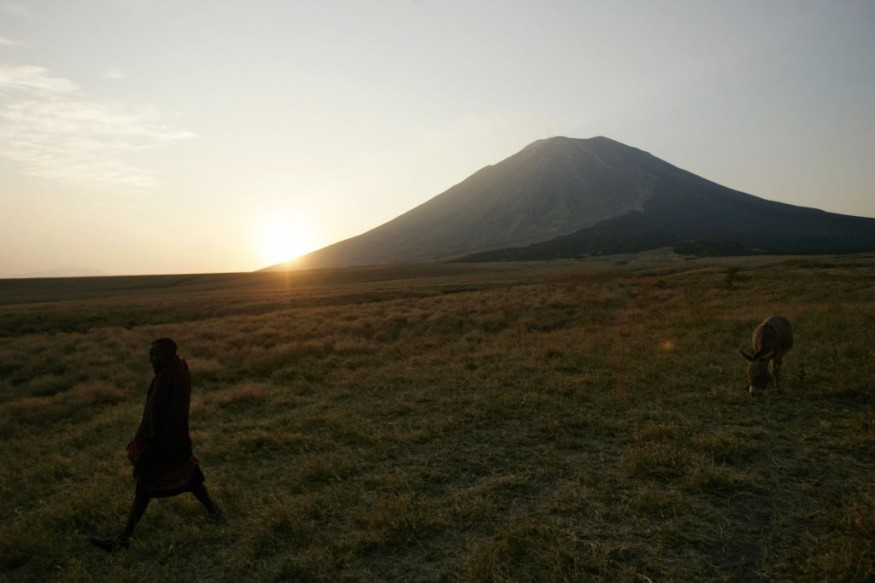
The Ol Doinyo Lengai volcano, also known as the Mountain of the Gods, is situated in Tanzania, East Africa.
Experts said that it is part of the East African Rift System, which crosses the continent for at least 5,000 km, from Afar to Mozambique. Ol Doinyo Lengai lies close to the border with Kenya and it is considered as one of the most unique and active volcanoes in the world.
Colder, More Fluid Lava
Scientists said that one of the outstanding features of Ol Doinyo Lengai is its chemical composition. Unlike most volcanoes, which produce molten lava containing silicate minerals, the lava at Ol Doinyo Lengai is called natrocarbonatite lava, which is considered rich in sodium and potassium carbonates.
Experts said that this type of lava is colder and more fluid than silicate lava, and has a unique black color.
The eruptions of Ol Doinyo Lengai are also found to be unique. Scientists said that it is the only known active volcano in the world erupting this kind of lava.
The volcano usually experiences effusive eruptions, such as eruptions with flowing lava rather than explosions. Further, Ol Doinyo Lengai's lava has low viscosity, allowing it to flow easily down the volcano's slopes at temperatures between 500 and 600 degrees Celsius.
This relatively low temperature compared with other volcanoes makes Ol Doinyo Lengai the only known active volcano in the world to produce natrocarbonatite lava.
The unusual black color results from the composition and the comparably low temperature at which the said volcano erupts.
While basalt based lava erupting from volcanos in Hawaii reach scorching 1100 degrees Celsius, the Mountain of God's cough appears rather cool at about 510 degrees Celsius
Experts explained that once it gets in contact with moisture, the lava turns white.
They said that looking at Ol Doinyo Lengai with unsuspecting eyes, one might think its peak is covered in snow, while in fact it is black lava turned white.
The fertile lower levels of the Ol Doinyo Lengai are usually planted in vineyards and citrus.
The steep higher slopes are covered with oak, birch, and beech. Above 6,500 feet a few plants are found scattered among ashes, sand, and fragments of lava and slag.
It was observed that Ol Doinyo Lengai's eruptions are both fascinating and dangerous.
Lava flows from the volcano can reach great distances, and this can later pose threat to nearby wildlife and human settlements.
The Maasai people, who have always lived in the vicinity, regard and consider the said volcano as sacred.
They regard it as the abode of the gods and have adapted to life near the fire-spewing giant, understanding its behavior and taking the necessary precautions.
Read Also : Philippines' Most Active Volcano on the Verge of Eruption, Alert Level 2 Raised Amid Volcanic Unrest
Previous Eruption
To recall, local villagers living in the area in 2017 had looked at Ol Doinyo Lengai even more closely for weeks and months because scientists had monitored the volcano due to an increased activity.
This signaled that an eruption might be "imminent" during that time.
Still, no one had packed their bags just yet as "imminent" in geologist-speak can mean anything between a couple of weeks, months or even a year.
Experts noted that the last major eruptions were recorded in 2008.
© 2025 NatureWorldNews.com All rights reserved. Do not reproduce without permission.





